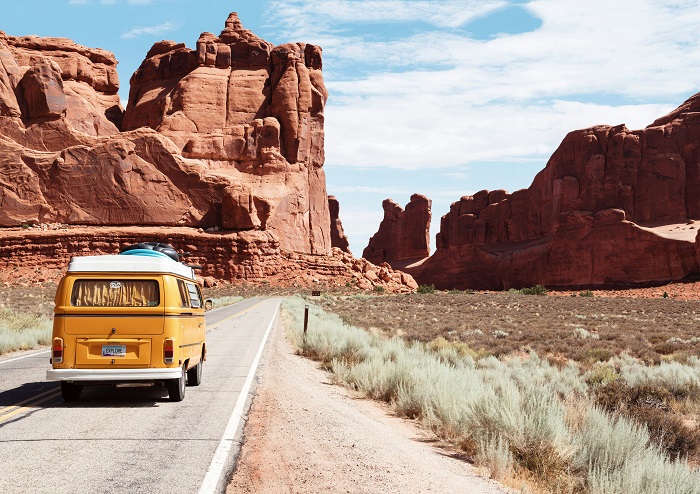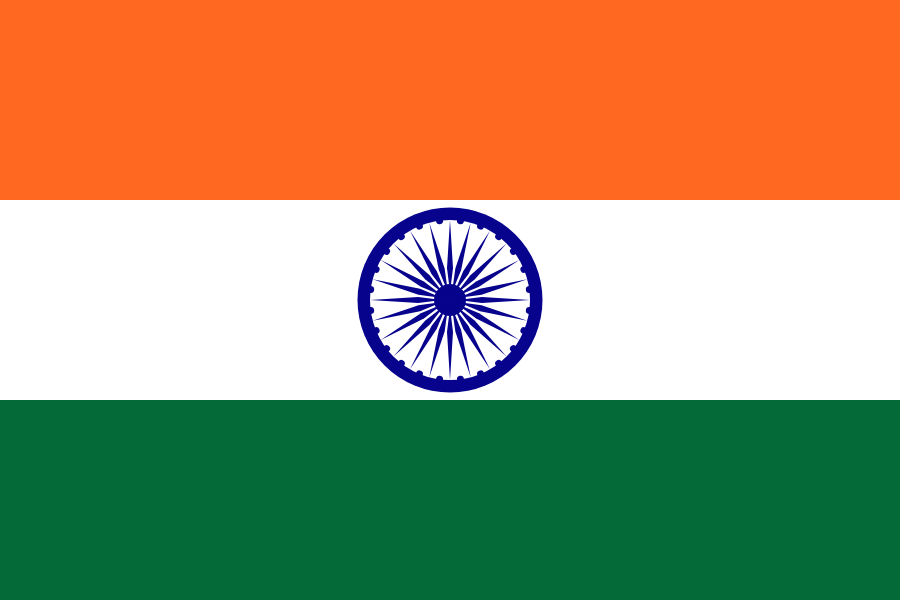
by semalsharma | Jul 12, 2025 | Travel
Stepping into the world of international travel can be both exciting and overwhelming. From choosing the right destination to handling travel documents, there’s a lot to consider—especially for first-time travelers. But the good news is, 2025 is shaping up to be a year of convenience, innovation, and bucket-list-worthy experiences.
If you’re planning your very first trip abroad, certain countries stand out for their accessibility, cultural richness, and beginner-friendly environment. Let’s explore some of the top destinations ideal for new travelers in 2025, while also guiding you through the essentials like how to apply for Dubai visa and other key travel steps.
Why 2025 Is the Perfect Year for Your First International Adventure
The travel industry has never been more digitally streamlined. From mobile boarding passes to biometric immigration systems, the shift toward frictionless travel is in full swing. Countries are now offering online visa platforms and simplifying procedures, especially in tourist hubs like the UAE.
Travelers from India, for example, will find that options like the UAE Visa For India are now easily accessible online, allowing for smooth entry into a region known for its luxury, history, and safety. These upgrades have made it significantly easier for beginners to take their first step into global travel without the stress that once came with complex procedures.
1. United Arab Emirates: A Fusion of Future and Tradition
Dubai and Abu Dhabi are more than just architectural marvels—they are among the most welcoming cities for first-time visitors. English is widely spoken, public transportation is efficient, and the level of safety is among the highest in the world. With curated Dubai tour experiences and heritage-rich souks, it’s a place where modern comfort meets deep-rooted tradition.
To begin planning, travelers can simply apply for Dubai visa online, cutting down on paperwork and making the entire process user-friendly. For Indians, securing a UAE Visa For India has become even more straightforward in recent years. Whether you’re craving desert adventures, luxury shopping, or a cultural immersion in Old Dubai, the UAE delivers it all with elegance.
2. Singapore: Small in Size, Big in Experience
Singapore is another great pick for new international travelers. Clean streets, a well-connected metro, and multilingual signage make it easy to navigate. The city offers a unique blend of cultures—Malay, Chinese, Indian, and Western—all coexisting peacefully in a hyper-modern setting.
From the futuristic Gardens by the Bay to the hawker stalls of Chinatown, Singapore delivers top-tier urban experiences with minimal culture shock. Plus, visa-on-arrival or short-stay visa agreements are available for many nationalities, including Indians, simplifying the entry process.
3. Thailand: Culture, Cuisine, and Coastlines
Thailand has long been a favorite for those venturing abroad for the first time. It’s affordable, visually stunning, and full of friendly locals. Whether it’s temple-hopping in Chiang Mai or sunbathing in Krabi, every experience feels like a highlight.
Its relaxed entry rules and efficient tourism services make Thailand perfect for beginners. English is widely spoken in tourist regions, and locals are used to assisting foreigners, making it easy to ask for directions, recommendations, or help.
4. Turkey: A Cultural Crossroads
Straddling Europe and Asia, Turkey gives you the best of both continents. From the colorful bazaars of Istanbul to the fairy chimneys of Cappadocia, it’s a destination brimming with history, hospitality, and diversity.
For first-timers who want a culturally rich experience without being overwhelmed, Turkey provides comfort, flavor, and unforgettable views. And with e-visas available for many countries, including India, it’s easy to plan and execute your trip digitally.
5. Japan: Orderly, Polite, and Fascinating
Though it may seem intimidating due to language and cultural differences, Japan is surprisingly beginner-friendly. It’s extremely safe, public transport is unmatched in efficiency, and locals are respectful and eager to help—even if there’s a language gap.
Cities like Tokyo, Kyoto, and Osaka offer a balance between modern excitement and deep cultural roots. And with digital translation tools becoming more reliable, you won’t feel lost—even in a country where English isn’t the primary language.
Tips to Make Your First International Trip Smooth
a. Visa Applications Are Easier Than You Think
Most countries now allow for online visa submissions, making it possible to apply for Dubai visa or check on your UAE Visa For India status without stepping into an embassy. Always use official government portals or authorized partners, and keep digital copies of your application, passport, and flight bookings.
b. Pack Light and Smart
Don’t overpack—focus on essentials and leave room for souvenirs. Check the weather, understand cultural dress codes, and bring items like a universal adapter, power bank, and digital document backups.
c. Stay Connected
Buy a local SIM card or activate international roaming for GPS, translations, and instant communication. Apps like Google Maps, TripIt, and currency converters are must-haves.
d. Respect Local Norms
From greetings and tipping customs to dress codes and public behavior, understanding cultural etiquette will make your trip smoother and more respectful. Always do a little homework before you arrive.
Travel Beyond Borders with Confidence
International travel isn’t just about places—it’s about perspective. Once you take your first trip, the world feels smaller, more accessible, and infinitely more interesting. And thanks to digitized systems like the ability to apply for Dubai visa and easy access to options like the UAE Visa For India, there’s nothing holding you back.
Don’t wait for the “perfect time.” The world is ready. And with tools, guidance, and destinations tailored for first-timers, you are too.
Final Thoughts
Planning your first international trip in 2025 doesn’t have to be complicated. With friendly visa policies, advanced digital systems, and countries eager to welcome new visitors, it’s never been easier to travel smart and stress-free. Choose a beginner-friendly destination, understand the process, and take that leap. Your global adventure awaits—start by taking the first step today.

by Rashika | Jul 12, 2025 | Travel
Introduction
It’s often said that travel is about the destination—but sometimes, it’s the in-between moments that leave the strongest imprint. Those unexpected layovers, long airport waits, brief city glimpses from taxi windows, and chance conversations with strangers—this is where some of the most meaningful travel stories unfold. These interludes become the stitching that holds the bigger journey together, turning a mere itinerary into an adventure.
For Indian travelers venturing abroad, especially to dynamic places like the Middle East, these moments often begin long before arrival. The excitement of a trip starts during the planning stage—looking up flights, researching cities, gathering documents, and applying for the right permits, such as a Visa to Dubai when the UAE is on the map. It’s in these preparations that the emotional build-up begins.
Because when you’re between here and there, anything can happen—and often, it does.
Beyond the Departure Gate
Every trip begins at the airport, a place that’s simultaneously chaotic and calming. As you pass through security, scan departure boards, and watch planes rise into the sky, there’s a quiet sense of transformation. You’re leaving one version of yourself behind and slowly stepping into another.
What many people don’t anticipate, especially during their first few trips abroad, is how travel becomes a collection of tiny in-between experiences. It’s the moment you help a fellow passenger fill out an immigration form. Or when you lose track of time exploring a bookshop while waiting to board.
Sometimes, these liminal spaces—where you’re not quite at your origin or destination—offer clarity. They become emotional stopovers as much as physical ones. And often, they come with valuable lessons in patience, adaptability, and presence.
The Paperwork Before the Plane
Long before these airport stories unfold, there’s another kind of stopover: the bureaucratic kind. Every international traveler knows that trips are not just built on dreams—they’re also built on documents. For Indian citizens heading to countries like the UAE, this means organizing everything from travel insurance to flight confirmations, and of course, securing a UAE visa for India.
Though often viewed as a formality, visa processing actually forms a key part of the travel experience. It forces you to engage deeply with your destination—what kind of entry is required? What documents are accepted? What are the expectations?
But this phase is more than a checklist. It’s the psychological start of the journey. Once your visa is approved, the trip feels real. It’s confirmation that you’re not just imagining your escape—you’re on your way to it. In a sense, the email or notification that confirms your visa can feel as momentous as the boarding call itself.
Stories That Don’t Make the Itinerary
No matter how detailed your travel plan is, it’s the unplanned moments that often become the best stories.
Take stopovers, for example. You might be scheduled for a two-hour layover in a foreign city, only to be delayed overnight. While it may start with frustration, these pauses often turn into unexpected mini-adventures. Maybe you try an unfamiliar dish in the airport food court. Or strike up a conversation with someone from a country you never considered visiting. Maybe you watch the sunrise from a terminal bench while sipping bad coffee that somehow tastes perfect in the moment.
These aren’t the moments you post on social media. But they’re the ones you remember most vividly.
Because in travel—as in life—it’s what happens when you’re not looking that shapes you.
Finding Connection in Transit
Something magical happens when people are in transit. Social walls come down. You’re more open to interaction, more willing to smile at strangers, more likely to share a charger or lend an ear.
One traveler waiting for a delayed flight might find themselves in a heart-to-heart with someone they’ve just met. Another might discover a mutual love for travel writing, music, or languages with a cab driver during a short city stop. In these fleeting interactions, there’s a shared vulnerability that makes connection easier.
These encounters are brief but powerful. And even though they might not make it into your photo album, they stay with you. They remind you that the world is not just a place to explore—it’s a network of lives intersecting in small, unpredictable ways.
The Inner Journey
Beyond new landscapes and foreign accents, travel reshapes your internal world. You leave home thinking you’re just visiting another place, only to return with a deeper understanding of yourself.
It might be a realization that you’re more independent than you thought. Or that you enjoy solitude. Or that you’re not just curious about the world—you belong in it.
These inner shifts often happen quietly—during a solo breakfast at an unfamiliar airport café or while journaling in the hotel room after a long day. They’re the soul-level souvenirs you collect without knowing it.
A New Way of Looking at Time
One of the most profound gifts of travel is how it alters your perception of time. Back home, a two-hour delay might feel like an eternity. On the road, it’s a gift—a window for observation, reflection, or rest.
When you’re not rushing between tasks, time becomes elastic. A ten-minute walk in a foreign alleyway can feel more vivid than an entire week back home. Suddenly, every moment counts—not because you’re busy, but because you’re present.
It’s in this awareness that real transformation takes root. You begin to slow down not out of laziness, but out of reverence—for the moment, the place, and the journey itself.
Conclusion
Travel isn’t just about destinations and bucket lists. It’s about the moments between your origin and your endpoint. It’s in the visa forms, the delayed flights, the airport naps, the midnight conversations with strangers, and the simple joy of watching the world move past you while you’re in motion.
Whether you’re planning a dream trip or already on the go, don’t overlook the magic of these in-between spaces. They’re where stories begin. They’re where transformation happens. And for every Indian traveler holding their passport and preparing their next journey, whether it’s applying for a Visa to Dubai or securing a UAE visa for India, know this: the real beauty lies not just in where you’re headed—but in everything that unfolds before you get there.

by SpeakRights | Jul 11, 2025 | Travel
In the ever-evolving world of corporate travel, staying ahead of trends is crucial for UAE-based businesses. The global landscape of corporate travel is changing rapidly, influenced by technology, sustainability, and personalized experiences. Understanding these trends will enable businesses to make informed decisions, optimize travel policies, and choose the best travel partners such as the best travel agency in Dubai, a travel agency in Ajman, Umm Al Quwain National Travel Agency, and experienced airline booking agents.
1. The Rise of Technology-Driven Solutions
The integration of technology in the travel industry has transformed the way businesses approach corporate travel. From AI-driven booking tools to virtual reality previews of accommodation and destinations, technology offers unprecedented efficiency and comfort. The best travel agency in Dubai now uses sophisticated platforms that integrate seamlessly with corporate travel policies, offering real-time data, personalized options, and streamlined booking processes. As technology advances, we can expect even more innovative solutions that will simplify travel management for businesses and enhance the travel experience for employees.
2. Emphasis on Sustainability
Sustainability is no longer a buzzword but a critical factor in the corporate travel decisions of UAE-based businesses. Companies are increasingly seeking services of travel partners like the Umm Al Quwain National Travel Agency that prioritize eco-friendly travel options and support sustainability initiatives. This could mean opting for airlines with newer, more fuel-efficient fleets, accommodations that follow sustainable practices, or even organizing virtual meetings to reduce the need for travel.
3. Personalized Travel Experiences
The concept of bleisure (blending business with leisure) is gaining popularity among corporate travelers. As a result, businesses are looking towards travel agency in Ajman and other emirates that offer personalized travel experiences that can combine the efficiency of business travel with the relaxation of leisure trips. This trend is about creating unique and memorable journeys for business travelers, from custom itineraries that include local experiences to accommodations that cater to the specific preferences of the traveler.
4. Focus on Traveler Well-being
Employee well-being is taking center stage in corporate travel policies. Companies are increasingly prioritizing the physical and mental health of their travelling employees. This includes ensuring the availability of health and wellness facilities, flexible travel schedules to reduce stress, and access to 24/7 support from airline booking agents. The well-being trend is a response to the understanding that a healthy, happy employee is more productive and engaged.
5. Increasing Demand for Integrated Services
UAE-based businesses are looking for comprehensive solutions that can handle all aspects of corporate travel. This includes seamless integration of flight bookings, accommodations, transfers, and visa services. Working with an agency that can offer end-to-end services simplifies the travel process for companies, ensuring a smoother, more cohesive travel experience for employees. This demand for integrated services makes it essential for businesses to choose travel partners that have a wide network and are capable of providing a holistic service offering.
6. Rise of the Sharing Economy
The sharing economy has left a mark on corporate travel as well. More businesses are open to using services like Airbnb for accommodation or Uber for transport due to their cost-effectiveness and flexibility. Travel agency in Ajman, Dubai, and other emirates are adapting to this trend by including these options in their corporate travel offerings, providing businesses with a wider range of choices to suit their budgets and travel policies.
7. Enhanced Duty of Care
With global uncertainties and the need for agile responses to changes, businesses are putting a stronger emphasis on duty of care. This means ensuring that traveling employees are safe, can easily be contacted, and can be quickly brought home if necessary. Agencies that offer comprehensive risk management solutions and up-to-date travel advisories, like Umm Al Quwain National Travel Agency and the best travel agency in Dubai, are becoming invaluable partners for UAE-based companies.
The Role of Anta Travel
Anta Travel has been a cornerstone in reshaping corporate travel for UAE-based businesses. With a deep understanding of the evolving landscape of travel, Anta Travel positions itself not just as a service provider, but as a partner committed to enhancing the corporate travel experience. Our expertise spans from offering the latest technology-driven travel solutions to ensuring personalized and sustainable travel experiences for each client.
What sets Anta Travel apart is our commitment to innovation, customer satisfaction, and safety. As the industry moves towards more integrated services, our comprehensive offerings make travel planning and management effortless for businesses. Our professional team is equipped to deliver top-notch services, ensuring that every aspect of corporate travel, from airline booking agents to post-trip reporting, is handled with the utmost care and efficiency.
In conclusion, as the corporate travel landscape continues to evolve, UAE-based businesses must stay informed about these trends to make strategic decisions. Partnering with the right travel agencies, like Anta Travel, plays a crucial role in navigating these changes successfully. As we move forward, the focus will increasingly be on creating travel experiences that are efficient, sustainable, personalized, and conducive to employee well-being. Anta Travel is at the forefront of this evolution, ready to lead businesses through the future of corporate travel with confidence and expertise.

by magicfares | Jul 11, 2025 | Travel
Flying may be an exciting experience, however in case you’re not familiar with the airport or airline procedures, the experience may also be overwhelming. Whether you’re a first-time traveler or a person who hasn’t flown in a while, knowing the boarding process can help reduce stress and ensure a smooth start to your journey.
In this article, we offer a comprehensive, step-by-step guide to the flight boarding process—from the moment you arrive on the airport to the time you settle into your seat.
1. Arriving at the Airport
The flight experience starts well earlier than takeoff. It’s critical to reach at the airport with enough time to finish all pre-boarding formalities.
•For domestic flights, passengers are commonly suggested to reach at least 2 hours earlier than departure.
•For international flights, arriving 3 hours in advance is a best practice.
Early arrival provides sufficient time for check-in, luggage drop, security checks and locating your boarding gate—without the need to hurry.
2. Check-In Process
There are two main ways to check in for your flight: online check-in and airport counter check-in.
Online Check-In
Most airways permit passengers to check in online through their website or mobile app 24 to 48 hours earlier than departure. This process enables tourists to choose their desired seat, download or print their boarding pass and in lots of instances, indicate how many number of bags they’ll be checking in. If you don’t have any check-in luggage, online check-in allows you to skip the check-in counter completely and proceed directly to security check.
Airport Counter Check-In
If you haven’t checked in online, or in case you prefer personal help, head to the airline’s check-in counter at the airport. You will need to provide your ID and travel ticket or booking reference. The airline staff will issue your boarding pass and tag your check-in luggage.
Some airports also have self check-in kiosks, wherein you could scan your ID or booking details to obtain your boarding pass and luggage tags.
3. Baggage Drop
After they check in online, guests will go to the baggage drop-off desk. At this point, the airline workers will weigh and tag your bags before placing them in the cargo hold of the plane.
Make sure your bags are the right size and weight for the airline and check that you aren’t bringing anything that isn’t allowed or is limited in your checked luggage. This comprises power banks and lithium batteries.
Always keep the receipt for the baggage tag. It will help you if your luggage gets misplaced or is late.
4. Security Screening
After check-in and baggage drop, continue to the security screening place. This is a mandatory process for all passengers before coming into the boarding place.
At security:
•Place all hand luggage, jackets, digital items (like laptops and tablets) and metallic items (along with belts, cash, keys) in trays furnished at the screening counter.
•Walk through the metal detector as advised by security personnel.
•In a few instances, a manual pat-down or a body scan can be carried out for added screening.
•Once cleared, acquire your belongings from the trays and organize your items.
Security protocols can vary slightly depending on the airport and destination, specifically for international flights. Cooperate with the security staff and follow instructions sign boards for a smooth process.
5. Immigration and Passport Control (International Flights Only)
For International flights, you must additionally pass via immigration after security screening. Present your passport, visa (if required) and boarding pass to the immigration officer. You may be asked questions regarding your vacation spot, duration of your stay and purpose of journey.
Once your documents are verified and stamped you will proceed to the international departure location.
6. Proceed to the Boarding Gate
After you’ve done everything you need to do look at the flight information display monitors to find out where your boarding gate is. Also, this information is usually on your boarding pass. It’s also crucial to check the display boards often for the most up-to-date information because gate numbers sometimes change.
Give yourself plenty of time to get to your gate because airport terminals can be very big and hard to navigate. If your gate is at the end of the terminal you should attempt to avoid spending too much time in the shopping or dining areas that are near security.
7. Wait for Boarding to Begin
Once you reach the boarding gate, wait in the designated seating area until your flight is called. Boarding usually begins 30 to 60 minutes before the scheduled departure time and is done in a structured manner to maintain order and efficiency.
Most airlines follow a zone-based or group-based boarding process. This may include:
• First and Business Class passengers
• Frequent flyers or priority members
• Families with children, elderly passengers, and those requiring assistance
• Economy class passengers by rows or zones
Listen for announcements and watch the display screens at the gate. Boarding group numbers or seat ranges will be called one by one.
8. Present Your Boarding Pass and Identification
When the announcement of your boarding group is made, you will need to wait in line at the gate and provide both your boarding pass and a valid picture identification issued by the government (such as a passport or national identity card).
A boarding pass will be scanned by the gate agent and your identification will be verified. As soon as you are given clearance, you will be permitted to proceed to the airplane.
9. Entering the Aircraft
There are usually two ways to on board the plane and the one you choose will depend on the airport and where the plane is positioned.
An aerobridge is a walkway that looks like a tunnel that goes straight from the boarding gate to the plane.
At some airports, the shuttle bus is a way for people to go to the plane that is parked on the tarmac. Keep your boarding pass until you are seated and be sure to follow the instructions given to you by the ground staff.
When people on board a plane, they usually go through the front or back door, depending on the layout.
10. Finding Your Seat and Stowing Cabin Baggage
Upon entering the aircraft, locate your seat using the seat number on your boarding pass. Airline crew members are available to assist if needed.
Once at your seat:
• Place your carry-on luggage in the overhead bin or under the seat in front of you.
• Keep essential items such as your passport, phone, wallet, and headphones within easy reach.
• Sit down and fasten your seatbelt as instructed.
Be mindful of other passengers trying to board and avoid blocking the aisle for too long.
11. Final Cabin Checks and Takeoff
As boarding concludes, the cabin crew will perform final checks. They will ensure:
• All passengers are seated and wearing their seatbelts
• Carry-on bags are securely stowed
• Electronic devices are in airplane mode or switched off
• Tray tables are up and window shades are open
After the safety demonstration, the aircraft will taxi to the runway for departure. Sit back, relax, and prepare for takeoff.
Conclusion
Even though it is a detailed process, the process of boarding a flight is simple once you have a good understanding of the steps in which the processes are performed. Being on time, maintaining vigilance and according to the directions provided by both the airline and the airport are essential components of a hassle-free travel.
In order to travel with self-assurance and peace, it is beneficial to be aware of what to predict at each stage of the journey, regardless of whether you are flying for business, pleasure or to visit loved ones.

by hajjumrah4u | Jul 7, 2025 | Travel
Performing Umrah is a religious journey each capable Muslim strives to fulfill. With the upward push in tailor-made journey services, Umrah booking from UK has become extra handy, streamlined, and low-cost for pilgrims throughout the country. Especially for the ones in the Midlands, there are several authentic agencies supplying cheap Umrah packages Birmingham, making it easier than ever to tour with self-assurance and peace of mind.
Why Umrah Booking from UK is Easier Today Than Ever Before
In the beyond, making plans for Umrah frequently intended complicated office work, lengthy waits for visa approvals, and unreliable marketers. Today, however, pilgrims can whole their Umrah booking from UK completely online, with licensed tour agencies presenting complete-provider programs that encompass the entirety from flights to lodging.
Convenience Through Trusted Agencies
Numerous UK-based total groups are accepted with the aid of the Saudi Ministry of Hajj & Umrah. These carriers take care of documentation, institution coordination, and lodging, making sure that your spiritual attention stays uninterrupted by logistical issues.
Local Expertise for Birmingham Residents
For those primarily based in Birmingham, deciding on nearby sellers gives an added benefit. Local groups offering cheap Umrah packages Birmingham offer on-hand in-character consultations and frequently cater to network desires with language guides and organization bookings.
Components of a Successful Umrah Booking from UK
A whole Umrah booking from UK typically includes:
-
Visa processing and registration with Nusuk
-
Return flights (direct or indirect)
-
Hotel accommodation near Masjid al-Haram or Masjid al-Nabawi
-
Ground delivery (such as Ziyarat trips)
-
Group chief or pupil accompaniment
What to Look For in a Package
Ensure that the corporation you choose gives obvious pricing, flexible itineraries, and full ATOL safety. Many providers of reasonably priced, cheap Umrah packages Birmingham also provide customizable plans based on institution size, period, and unique travel needs.
Peak and Off-Peak Seasons for Booking
To get pleasant offers on the Umrah packages from UK, timing your travel is critical.
When to Travel for Cost Savings
Off-Peak: Mid-Muharram to Rabi al-Awwal and put up-Ramadan
Peak: Ramadan, Hajj season, and college holidays
Many reasonably-priced, cheap Umrah packages Birmingham are to be had in the course of the quieter months, offering a nonviolent experience at a lower price.
How to Find Cheap Umrah Packages Birmingham
Birmingham is home to a large Muslim community and trusted travel firms. Here’s how to find the best Cheap Umrah Packages Birmingham for your pilgrimage.
Compare Multiple Agencies
Get charges from at least three to 5 travel operators. Focus on what is covered: flights, transfers, food, and group length.
Use Reviews and Recommendations
Word of mouth is going a long way. Search online evaluations or ask your nearby mosque for remarks on companies of cheap Umrah packages Birmingham.
Don’t Ignore Package Inclusions
Sometimes a decrease prematurely fee hides extra fees. Look for packages that without a doubt list what is included (visa, lodging, food) to keep away from surprises.
Why Book Locally from Birmingham?
Residents of Birmingham benefit from:
-
Access to Birmingham Airport with direct international routes
-
Personalized in-workplace consultations
-
Community-based group departures
-
Lower transport fees to departure points
These practical advantages make Umrah booking from UK through neighborhood Birmingham companies a clever and stress-free choice.
Final Tips for UK Pilgrims Booking Umrah
-
Always verify ATOL or ABTA safety
-
Ensure the organization is licensed by the Saudi Hajj & Umrah Ministry
-
Clarify whether or not programs include day-by-day meals or institutional steering
“A smooth pilgrimage begins with cautious education, select the proper business enterprise, and let your heart lead the way.”
Final Thoughts
Performing Umrah is a purpose rooted in faith, not monetary privilege. Thanks to the upward push in tailor-made travel offerings, Umrah booking from UK is now less difficult, safer, and more price-competitive. For those in search of price-powerful solutions, several cheap Umrah packages Birmingham offers dependable, spiritually centered journeys without useless expenses.
Plan early, evaluate gives, and pick out an organization that aligns with your needs. Your sacred adventure awaits with the proper intentions and a well-organized reserving, you’ll be equipped to answer the call.

by armanalizahid32 | Jul 5, 2025 | Travel
Getting a visa to travel can often feel complicated. But when it comes to the Indian Visa for Sri Lankan Citizens, the process is simpler than many think. Whether the reason for the visit is tourism, business, or a medical trip, Indian authorities have made it easy and accessible for Sri Lankan passport holders.
This guest post explains everything Sri Lankan travelers need to know before applying for an Indian visa. It walks through requirements, application steps, and tips to ensure a smooth process—written in plain English, without the fluff. Let’s dive in.

Why Travel to India?
India is more than a destination. It’s an experience.
From the colorful streets of Delhi to the peaceful backwaters of Kerala, India offers something for everyone. Many Sri Lankans travel to India for spiritual reasons, family visits, shopping, festivals, or medical care. The cultural ties between the two countries are strong, and the short travel distance makes India a favorite spot for both first-time and repeat visitors.
But before packing your bags, a visa is required.
Who Needs the Indian Visa?
If you hold a Sri Lankan passport, you must have a visa to enter India. Whether you’re traveling for a few days or a few months, you need to apply in advance. The process may sound technical at first, but with the right guidance, it becomes easy to follow.
Other nationalities, like Swedish citizens, also need a visa to enter India. The process for an Indian Visa for Swedish Citizens is quite similar in structure, though the specific requirements may differ slightly. It shows that India has a consistent and organized visa system for many foreign nationals, including Sri Lankans.
Types of Indian Visas Available for Sri Lankan Citizens
Before applying, it’s important to know which type of visa fits your travel needs. Here are the most common visa types available for Sri Lankan citizens:
-
Tourist Visa: Perfect for sightseeing, visiting friends or family, and short leisure trips.
-
Business Visa: Suitable for attending meetings, conferences, or exploring trade opportunities.
-
Medical Visa: For individuals seeking medical treatment in India.
-
Student Visa: For Sri Lankan students who wish to pursue academic studies in India.
Each visa type has its own documentation and eligibility criteria. It’s important to apply for the correct category to avoid delays or rejection.
Basic Requirements for the Indian Visa for Sri Lankan Citizens
Here’s what applicants usually need to prepare before applying for an Indian visa:
-
A valid Sri Lankan passport with at least six months of validity
-
A recent passport-sized photo with a plain background
-
A completed visa application form
-
Proof of travel plans: round-trip tickets, hotel bookings, or invitation letters
-
Financial proof showing you can cover your stay
-
Any documents specific to your visa type (e.g., medical reports for a medical visa)
All documents must be clear, valid, and in English (or translated if necessary). Double-checking everything before submission saves time.
Application Process: Step-by-Step
Here’s how Sri Lankan citizens can apply for an Indian visa:
-
Decide the visa type that suits your visit (tourist, business, etc.).
-
Fill out the visa application form carefully. Make sure all details match your passport.
-
Gather the required documents, as mentioned above.
-
Submit your application at the designated visa submission center or embassy.
-
Pay the visa fee — it may vary depending on the type and duration of the visa.
-
Attend the visa interview if required (not always mandatory).
-
Wait for processing — it usually takes a few working days.
-
Receive your visa, either as a stamped visa in your passport or in an approved digital form.
Once the visa is approved, travelers are free to enter India within the visa’s validity period.
Important Tips for a Smooth Application
-
Apply early. Don’t wait until the last minute. Start the process at least 2–3 weeks before your travel date.
-
Keep copies of everything — passport, application form, payment receipt, and submitted documents.
-
Be honest on your application. Any false details could lead to rejection.
-
Check the visa validity and number of entries allowed (single, double, or multiple).
-
Respect the rules. Overstaying or misusing a visa can affect future applications.
Being prepared is key. Thousands of Sri Lankan citizens successfully apply for Indian visas every year — it’s all about following the steps.
What Happens After You Get Your Visa?
Once approved, the Indian visa will mention your entry date, the type of visa, and how long you can stay. Make sure to check these details and plan your trip accordingly.
Upon arrival in India, carry a printed copy of your visa and passport. Be ready to answer basic questions from immigration officials about the purpose of your visit. It’s standard and routine.
During your stay, enjoy everything India has to offer — from bustling street markets and ancient temples to spicy foods and scenic mountain views. Just remember to stick to the terms of your visa and stay within the allowed duration.
Conclusion
Applying for an Indian Visa for Sri Lankan Citizens may sound like a formal process, but it’s very manageable. With a bit of planning and attention to detail, travelers can complete the process smoothly and focus on what truly matters — exploring, connecting, and enjoying their journey in India.
Whether it’s a spiritual trip, a business venture, or a family reunion, India welcomes Sri Lankan travelers with open arms.
Call to Action
Thinking of heading to India soon? Start preparing your visa application today. Don’t let paperwork hold you back from experiencing one of the most vibrant and diverse countries in the world.
Get your documents ready, apply with confidence, and let the adventure begin.






